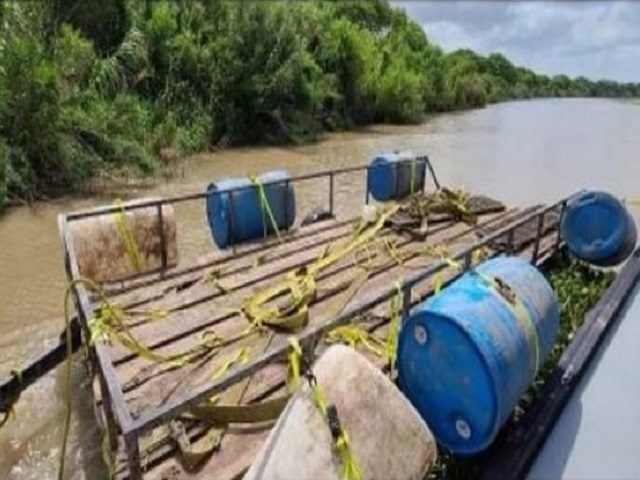Drug cartels operating in Mexico frequently employ creative means to smuggle narcotics across the border into the United States. One such method, unique to Texas’ Rio Grande Valley, is referred to by Border Patrol agents as a “Float-Over.” The technique involves using a makeshift ferry to move an SUV or pick-up truck, pre-loaded with narcotics, across the Rio Grande River.
This tactic is rarely employed elsewhere along the southwest border. According to a source within the Border Patrol, the cartels are packing the vehicles with drugs in Mexico and driving them to the river. Once on the river’s bank, the vehicles are placed on a make-shift ferry — usually, a flatbed cargo trailer with no axles. The trailer is fitted with foam and empty barrels for buoyancy.
“It’s amazing to see how they crudely engineer the ‘ferry’ to handle the weight of the narcotics and vehicle and avoid capsizing in the current,” the Border Patrol source told Breitbart Texas. Speaking on the condition of anonymity, the source says the cartels employ the method in broad daylight. Having the vehicle fully loaded when it reaches the United States side of the river makes for a speedy getaway according to the source.
“Right now, there are plenty of field workers harvesting crops near the river. When the smugglers cross, they time their departure in an attempt to blend in with legitimate farm traffic,” the source added. The source believes the cartels are taking advantage of the surge in migrant crossings in the area, hoping to encounter fewer Border Patrol agents along the river.
On Thursday, Border Patrol agents in Brownsville, Texas, attempted to stop a vehicle leaving the border area. The vehicle, a white SUV, failed to yield and a pursuit back to the river ensued. In the end, the smugglers drove the vehicle into the river in what agents refer to as a “splashdown.” Agents discovered 29 large bundles of marijuana located in the partially submerged vehicle.
The estimated street value of the marijuana, which weighed 665 pounds, was more than half a million dollars. Shortly after the narcotics seizure, agents discovered the abandoned make-shift ferry used to shuttle the SUV across the river.
According to Border Patrol reports, the Rio Grande Valley Sector leads the nation in narcotics seizures. The Border Patrol managed to interdict more than 110,000 pounds of marijuana, 13,754 pounds of cocaine, more than 9,000 pounds of methamphetamine, 788 pounds of fentanyl, and more than 400 pounds of heroin nationwide this year.
The seizure totals are impressive considering the burden facing the agency. Processing and providing humanitarian care for thousands of migrants illegally entering the country per day has stretched resources to the breaking point. The Rio Grande Valley agents have seen migrant apprehensions top 2,000 per day recently according to the source.
“The cartels are involved in everything, and they are making a killing, but we are not giving up.” the source says.
Randy Clark is a 32-year veteran of the United States Border Patrol. Prior to his retirement, he served as the Division Chief for Law Enforcement Operations, directing operations for nine Border Patrol Stations within the Del Rio, Texas, Sector. Follow him on Twitter @RandyClarkBBTX.

COMMENTS
Please let us know if you're having issues with commenting.